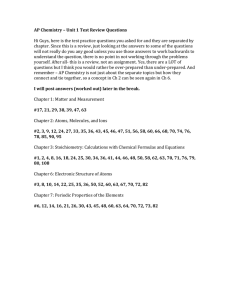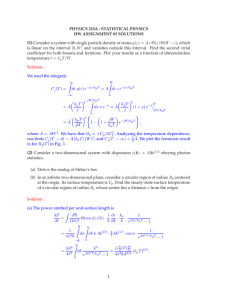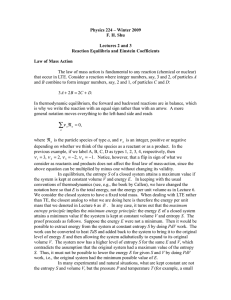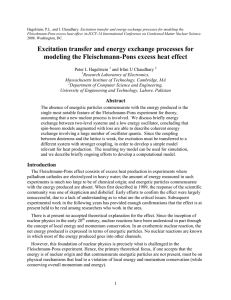PHY 4523 Spring 2000 – Homework 2
advertisement
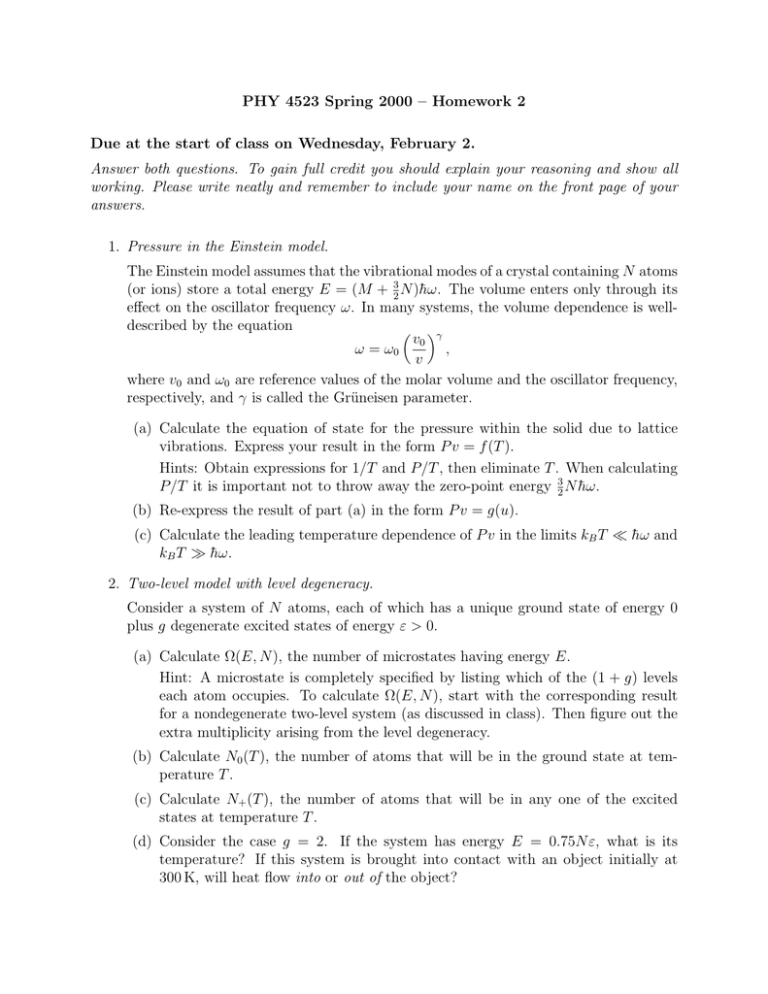
PHY 4523 Spring 2000 – Homework 2 Due at the start of class on Wednesday, February 2. Answer both questions. To gain full credit you should explain your reasoning and show all working. Please write neatly and remember to include your name on the front page of your answers. 1. Pressure in the Einstein model. The Einstein model assumes that the vibrational modes of a crystal containing N atoms (or ions) store a total energy E = (M + 32 N )h̄ω. The volume enters only through its effect on the oscillator frequency ω. In many systems, the volume dependence is welldescribed by the equation γ v0 ω = ω0 , v where v0 and ω0 are reference values of the molar volume and the oscillator frequency, respectively, and γ is called the Grüneisen parameter. (a) Calculate the equation of state for the pressure within the solid due to lattice vibrations. Express your result in the form P v = f (T ). Hints: Obtain expressions for 1/T and P/T , then eliminate T . When calculating P/T it is important not to throw away the zero-point energy 32 N h̄ω. (b) Re-express the result of part (a) in the form P v = g(u). (c) Calculate the leading temperature dependence of P v in the limits kB T h̄ω and kB T h̄ω. 2. Two-level model with level degeneracy. Consider a system of N atoms, each of which has a unique ground state of energy 0 plus g degenerate excited states of energy ε > 0. (a) Calculate Ω(E, N ), the number of microstates having energy E. Hint: A microstate is completely specified by listing which of the (1 + g) levels each atom occupies. To calculate Ω(E, N ), start with the corresponding result for a nondegenerate two-level system (as discussed in class). Then figure out the extra multiplicity arising from the level degeneracy. (b) Calculate N0 (T ), the number of atoms that will be in the ground state at temperature T . (c) Calculate N+ (T ), the number of atoms that will be in any one of the excited states at temperature T . (d) Consider the case g = 2. If the system has energy E = 0.75N ε, what is its temperature? If this system is brought into contact with an object initially at 300 K, will heat flow into or out of the object?





